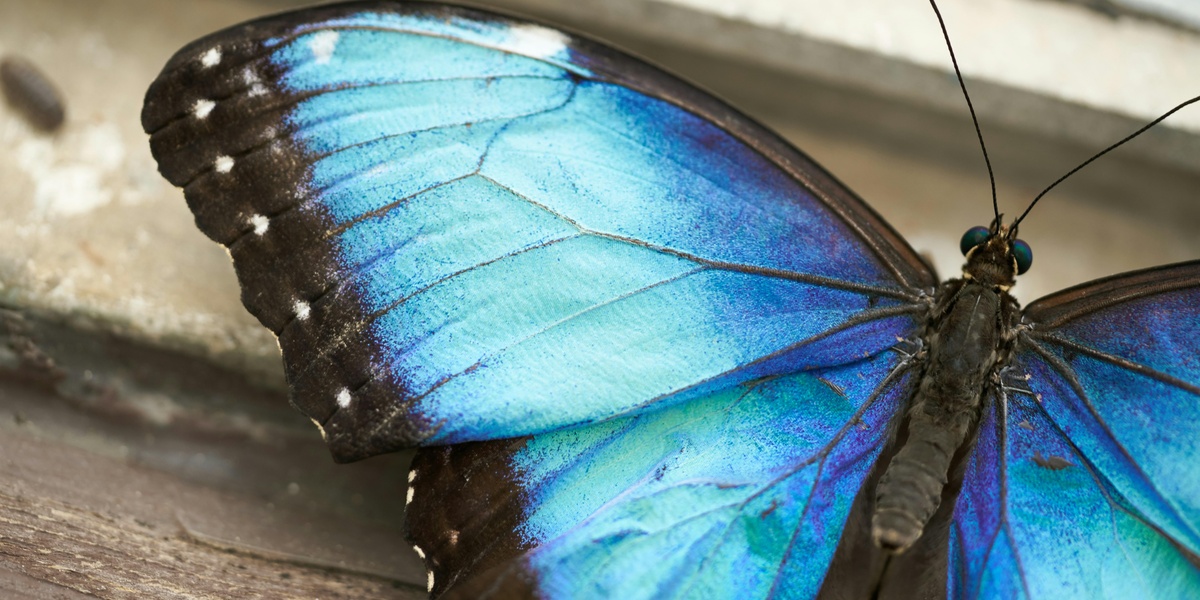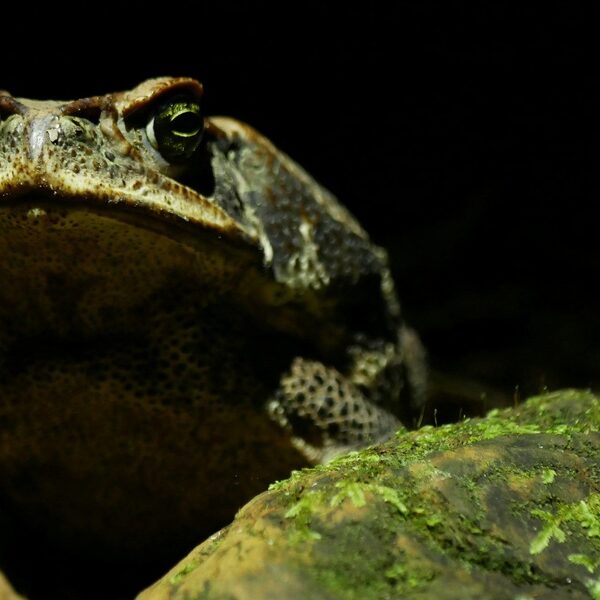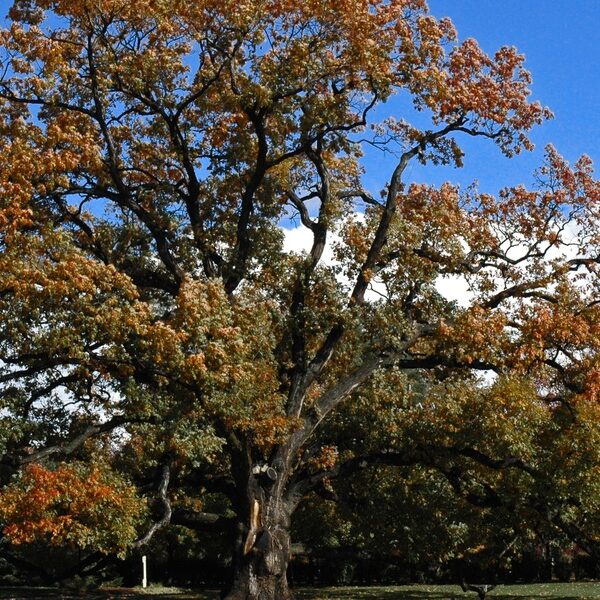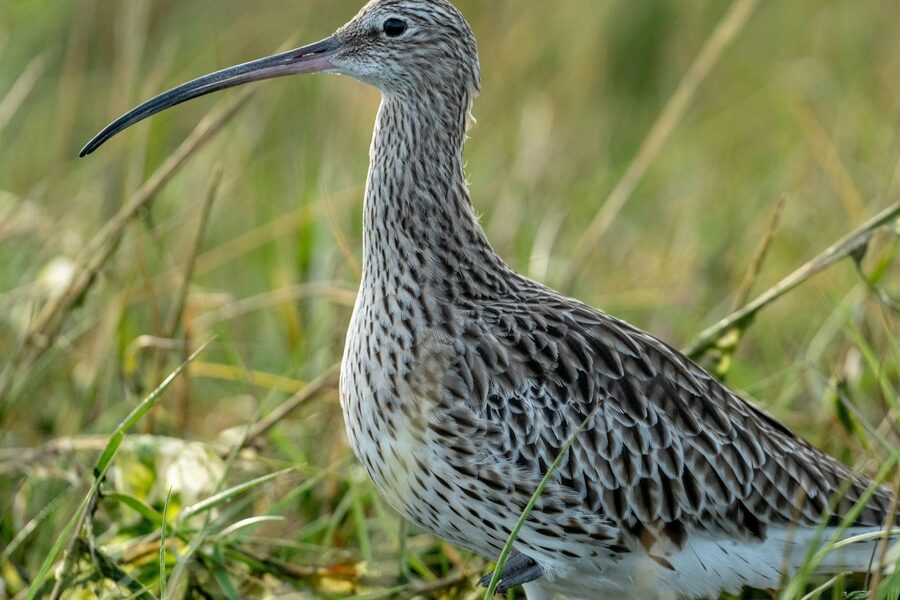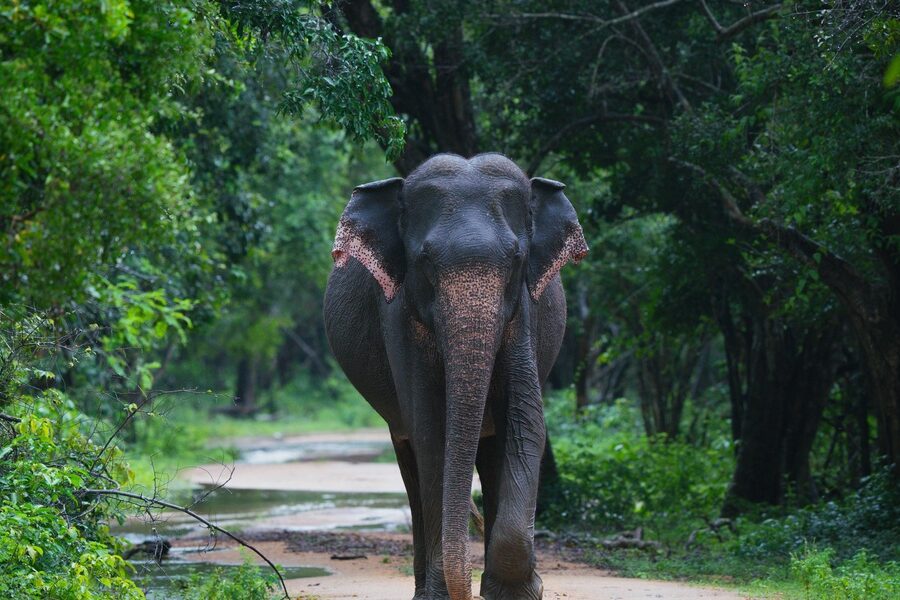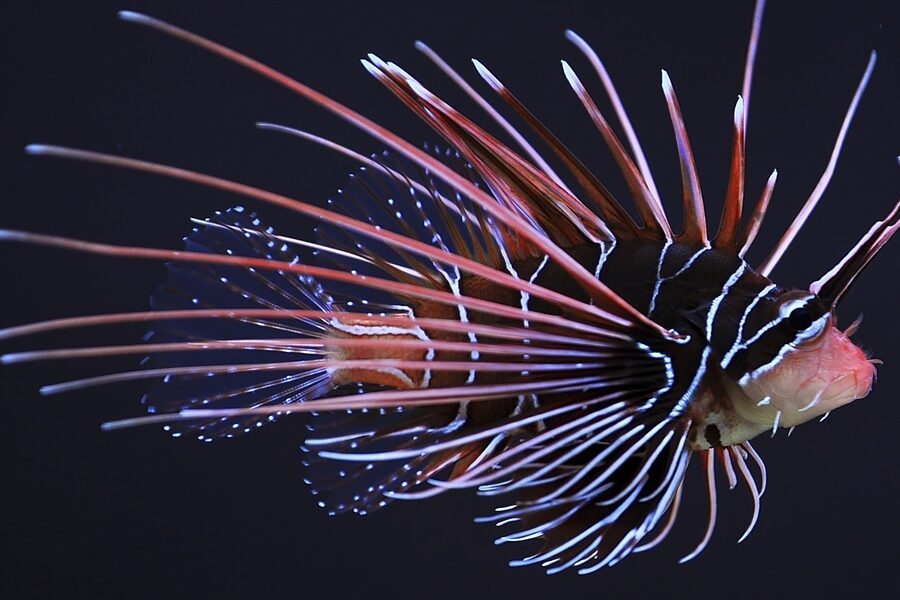The Amazon rainforest teems with insects at every scale, from tiny leafhoppers in the understory to night‑flying giants in the canopy; they drive pollination, decomposition and food webs across the region. A short walk can reveal army swarms, camouflaged katydids, jewel‑like beetles and more, depending on time of day and where you look.
There are 30 amazon rainforest insects, ranging from Army Ant to White Witch Moth. For each entry we list Scientific name,Size (mm),Habitat / range,Role / notable (max 15 words) so you can compare traits and distributions quickly — you’ll find below.
Which species am I most likely to notice on a daytime trail?
On daytime walks you’ll commonly spot ants (including Army Ant raids at the forest floor), leaf‑feeding beetles, brightly colored butterflies and stick insects; many moths and nocturnal species stay hidden until night. Look at leaf litter, flowers and tree trunks to catch different groups.
How accurate are the size and habitat notes in the list?
Sizes are approximate adult measurements from field guides and taxonomic references; habitat/range reflects typical observations rather than exhaustive distributions. Use the entries as a practical starting point, and consult specialist literature for precise taxonomic or regional details.
Amazon Rainforest Insects
| Common name | Scientific name | Size (mm) | Habitat / range | Role / notable (max 15 words) |
|---|---|---|---|---|
| Bullet Ant | Paraponera clavata | 18-30 | Forest floor, bases of trees | Possesses the most painful insect sting known. |
| Blue Morpho Butterfly | Morpho menelaus | 120-150 | Forest understory and canopy gaps | Iconic butterfly with brilliant, iridescent blue wings. |
| Hercules Beetle | Dynastes hercules | 50-175 | Decaying logs and forest floor | One of the world’s largest beetles; males have huge horns. |
| Leafcutter Ant | Atta cephalotes | 2-20 | Forest floor and subterranean nests | Farmers that cultivate fungus on harvested leaf pieces. |
| Titan Beetle | Titanus giganteus | 120-167 | Decaying wood in tropical rainforests | World’s longest beetle and one of the heaviest. |
| Army Ant | Eciton burchellii | 3-12 | Forest floor, in nomadic bivouacs | Nomadic swarm raiders that consume everything in their path. |
| Tarantula Hawk Wasp | Pepsis spp. | 20-50 | Forest edges and clearings | Hunts tarantulas to paralyze and lay eggs on. |
| Glasswing Butterfly | Greta oto | 55-60 | Shady, humid understory | Remarkable for its almost completely transparent wings. |
| Peanut-headed Bug | Fulgora laternaria | 75-90 | Tree trunks in lowland forests | Bizarre hollow head projection resembling a peanut. |
| Orchid Bee | Euglossa spp. | 10-15 | Humid forests, visiting orchids | Brightly metallic bees crucial for orchid pollination. |
| Owl Butterfly | Caligo memnon | 130-160 | Forest understory and edges | Huge eyespots on wings mimic owl eyes. |
| Human Botfly | Dermatobia hominis | 12-18 | Forested areas, near livestock | Larvae develop as parasites under mammal skin. |
| Helicopter Damselfly | Megaloprepus caerulatus | 190 | Light gaps with water-filled tree holes | World’s largest damselfly, preys on web-building spiders. |
| Postman Butterfly | Heliconius melpomene | 70-80 | Forest edges and sunny clearings | Famous for Müllerian mimicry and long lifespan. |
| Leaf-mimic Katydid | Typophyllum spp. | 40-60 | Shrub layer in tropical forests | Masters of camouflage, perfectly resembling living or dead leaves. |
| Click Beetle | Pyrophorus noctilucus | 20-40 | Near decaying wood and open areas | Produces bright, continuous light from thoracic spots. |
| Azteca Ant | Azteca spp. | 2-4 | Cecropia trees in forest gaps | Lives in a mutualistic relationship with Cecropia trees. |
| Sunset Moth | Urania leilus | 70-90 | Forest canopy and river edges | A day-flying moth with spectacular iridescent colors. |
| Harlequin Beetle | Acrocinus longimanus | 60-75 | Dead or dying fig and kapok trees | Has extremely long forelegs, especially the male. |
| Jewel Scarab | Chrysina spp. | 20-35 | Cloud forest canopy, feeding on leaves | Possesses a brilliant, mirror-like metallic sheen. |
| White Witch Moth | Thysania agrippina | 300 | Forest canopy | One of the world’s largest insects by wingspan. |
| Lubber Grasshopper | Tropidacris collaris | 80-120 | Forest clearings and riverbanks | One of the largest and most colorful grasshoppers. |
| Leaf-mimic Mantis | Choeradodis rhomboidea | 60-80 | Foliage in the forest understory | A large mantis that perfectly mimics a green leaf. |
| Army Ant Guest Beetle | Vatesus spp. | 5-8 | Within army ant raids and bivouacs | A beetle that lives inside army ant colonies. |
| Treehopper | Membracidae family | 3-12 | Stems and leaves of various plants | Known for bizarre and ornate pronotums (helmets). |
| Stingless Bee | Meliponini tribe | 3-15 | Nests in tree hollows, ground cavities | Important native pollinators that produce medicinal honey. |
| Assassin Bug | Zelus spp. | 10-20 | Vegetation, ambushing prey | Predator with a sharp beak to inject paralyzing saliva. |
| Cicada | Carineta spp. | 25-40 | Forest canopy, on tree trunks and branches | Produces loud, iconic buzzing songs in the forest. |
| Termite | Nasutitermes spp. | 3-5 | Arboreal nests on trees, logs | Key decomposers that build large, carton-like nests. |
| Dung Beetle | Canthon spp. | 10-25 | Forest floor, near animal droppings | Recycles nutrients by burying animal dung for food/reproduction. |
Images and Descriptions
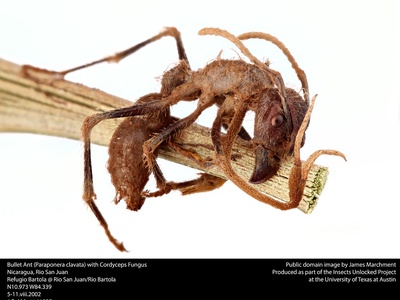
Bullet Ant
Known as the “24-hour ant,” its sting’s pain is likened to being shot. These large, solitary foragers hunt other insects and collect nectar, living in colonies at tree bases.
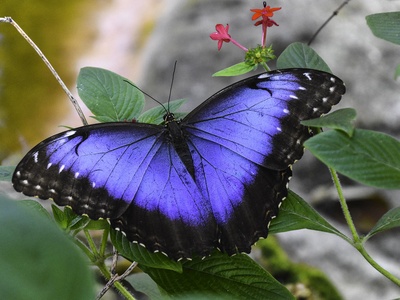
Blue Morpho Butterfly
The stunning blue of its wings is not from pigment but from microscopic scales that reflect light. The dull brown underside provides camouflage when the butterfly is at rest with its wings closed.
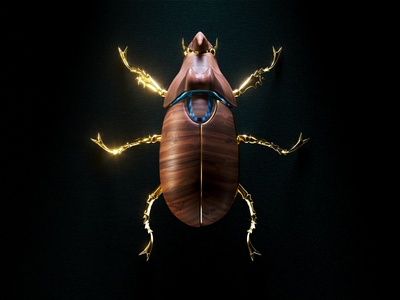
Hercules Beetle
Males use their enormous horns to fight rivals for mating rights. The larvae are giant grubs that live in and feed on rotting wood, playing a key role in decomposition.
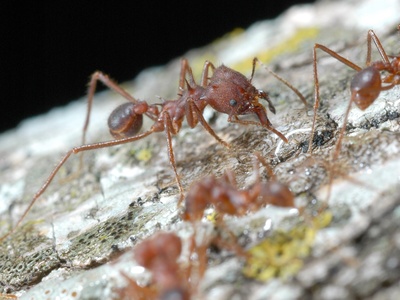
Leafcutter Ant
These ants form massive colonies and create long trails as they carry leaf fragments back to their nest. They don’t eat the leaves but use them as compost to grow a specific fungus for food.
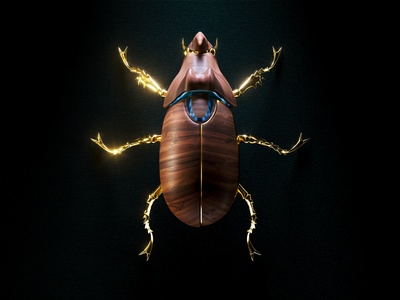
Titan Beetle
This massive longhorn beetle has powerful mandibles that can snap a pencil. The larvae have never been found but are thought to feed on decaying wood for years before pupating.
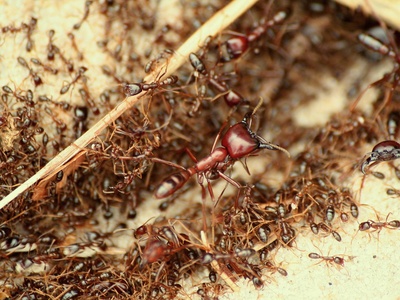
Army Ant
These ants don’t build permanent nests. Instead, they form massive living bivouacs with their own bodies. Their raids are a major force, flushing out insects for other animals to eat.
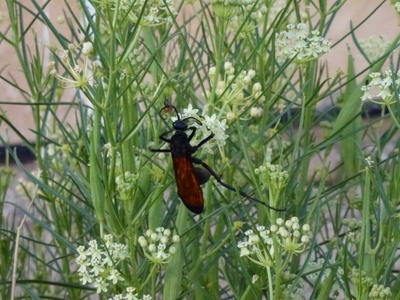
Tarantula Hawk Wasp
With a sting ranked among the most painful, this large wasp is a formidable predator. The female provisions her larva with a single paralyzed tarantula, which it eats alive underground.
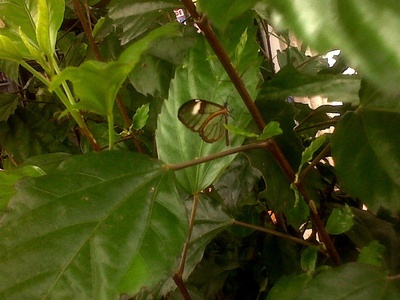
Glasswing Butterfly
Its transparent wings make it incredibly difficult for predators to spot. It achieves this transparency through a lack of scales and a nanostructured wing surface that minimizes reflection.
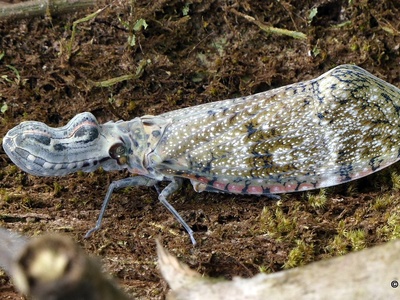
Peanut-headed Bug
Despite its startling appearance, this planthopper is harmless and feeds on tree sap. Old folklore claimed its bite was lethal unless the victim had sex within 24 hours, which is untrue.
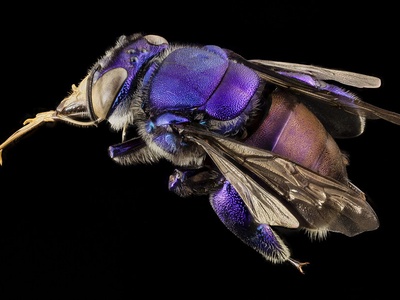
Orchid Bee
Male orchid bees are famous for collecting fragrant oils from orchids and other sources, which they use in complex mating displays. Their colors shimmer in greens, blues, and golds.
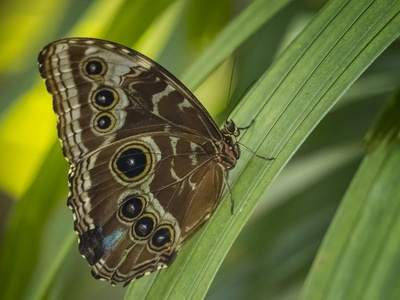
Owl Butterfly
These large butterflies are most active at dawn and dusk. Their prominent eyespots are a form of defense, startling or deflecting predators like birds by flashing a “predator’s face” at them.
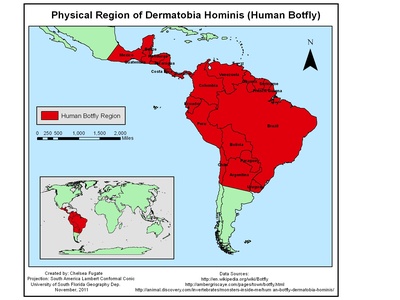
Human Botfly
The female botfly cleverly lays her eggs on a mosquito. When the mosquito bites a host, the eggs hatch and the larva burrows into the skin, where it develops before emerging.
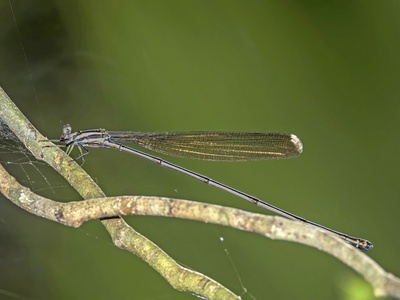
Helicopter Damselfly
With an enormous wingspan and fluttering flight, it hovers expertly to pluck spiders from their webs. Its larvae are top predators in the small aquatic ecosystem of tree holes.
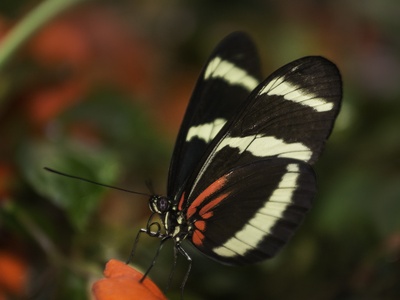
Postman Butterfly
This butterfly shares a warning pattern with other toxic species, reinforcing the signal to predators. They are also unique for feeding on pollen, which grants them a much longer adult life.
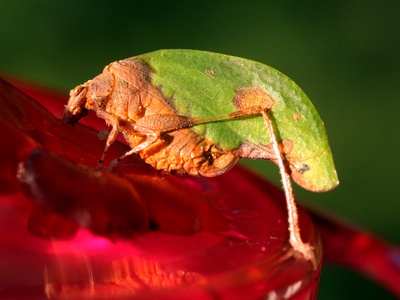
Leaf-mimic Katydid
Their bodies and wings are flattened and veined to an incredible degree, matching leaves in color, shape, and even signs of decay or damage to avoid detection by predators.
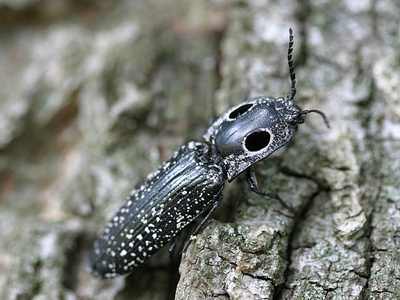
Click Beetle
Known as “headlight beetles,” they have two glowing spots on their thorax that emit a powerful green light. When threatened, they can snap their body to “click” and flip into the air.
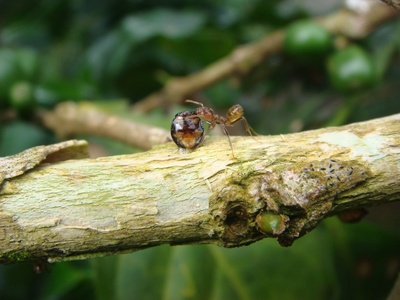
Azteca Ant
These aggressive ants live inside the hollow stems of Cecropia trees. They fiercely protect the tree from herbivores in exchange for shelter and special food bodies produced by the plant.
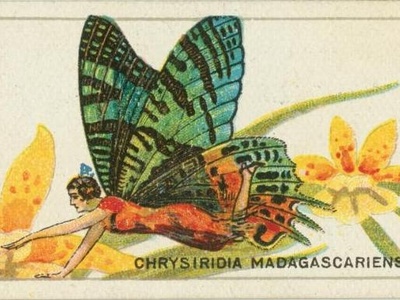
Sunset Moth
Often mistaken for a butterfly, its wings flash with brilliant, shifting colors created by optical interference. These colors serve as a warning to predators that it is toxic to eat.
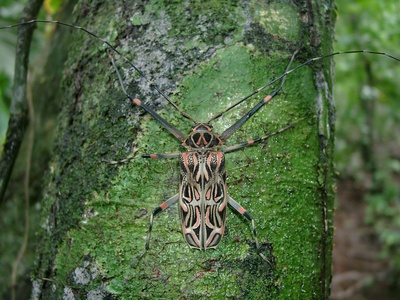
Harlequin Beetle
Males use their incredibly elongated forelegs to guard egg-laying sites and fight off rivals. Their bodies are covered in a complex and beautiful pattern of red, black, and yellow.
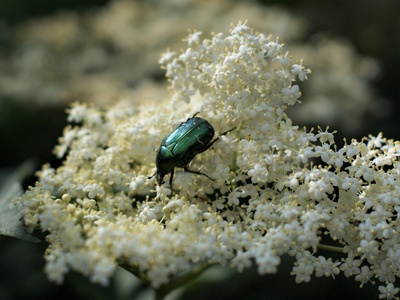
Jewel Scarab
These beetles are living jewels, with a cuticle that reflects light like polished gold or silver. Their stunning appearance provides camouflage among wet, glistening leaves in the forest canopy.
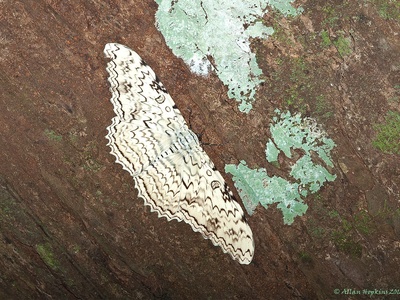
White Witch Moth
This giant nocturnal moth has a truly massive wingspan, making it a spectacular sight. Its pale, patterned wings provide excellent camouflage against tree bark during the day.
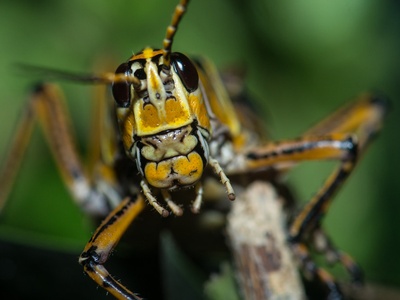
Lubber Grasshopper
This massive grasshopper is a powerful flier. Its bright colors, especially on its hind wings, serve as a startle display to warn off potential predators when it is disturbed.
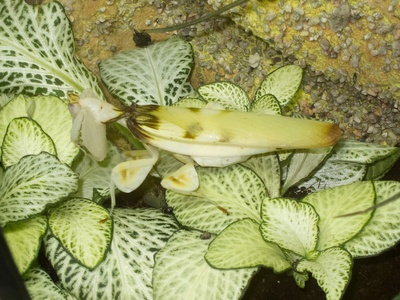
Leaf-mimic Mantis
Also known as the Shield Mantis, its thorax is expanded into a wide, flat, veined shield that makes it nearly invisible among the foliage where it waits to ambush its prey.
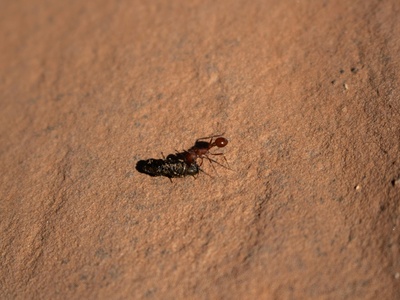
Army Ant Guest Beetle
This rove beetle has evolved to chemically mimic its army ant hosts, allowing it to live safely within the swarm. It grooms the ants and feeds on their captured prey and refuse.
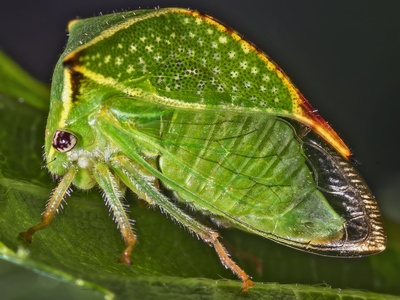
Treehopper
Treehoppers are masters of disguise, with body structures that mimic thorns, leaves, or even ants. These “helmets” offer protection from predators while they feed on plant sap.
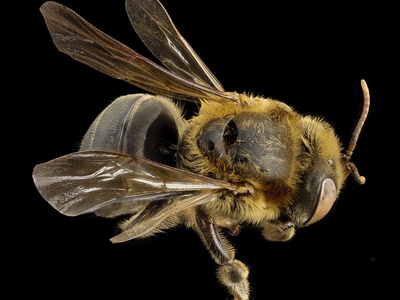
Stingless Bee
These social bees are a vital part of the rainforest ecosystem. While they lack a functional stinger, they defend their nests by biting and swarming intruders. Their honey is highly valued.
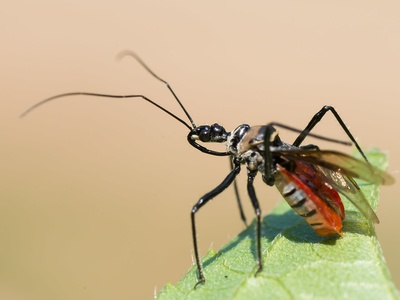
Assassin Bug
These bugs are effective hunters, often waiting patiently for other insects to come within reach. Some species cover themselves in plant debris or insect carcasses for camouflage.
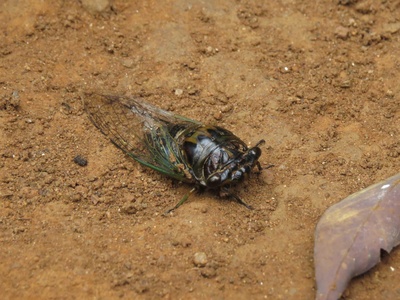
Cicada
The male cicada’s song, produced by vibrating membranes, is a dominant sound of the Amazon. Nymphs live underground for years, feeding on root sap before emerging as adults.
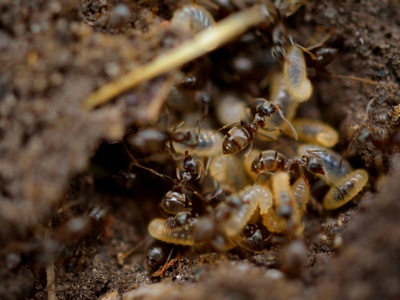
Termite
These termites are vital nutrient cyclers, breaking down tough wood cellulose. They are known for their “nasute” soldiers, which have a snout-like head used to spray sticky, toxic defensive chemicals.
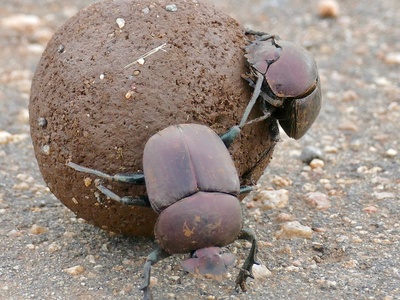
Dung Beetle
These essential ecosystem engineers clean the forest floor by rolling dung into balls and burying it. This action fertilizes the soil, disperses seeds, and helps control parasite populations.
